Are you one of those who love green plants, but the idea of dirt, and constant cleaning repels you? Well, here is an opportunity to grow a few houseplants stress-free. Explore the art of growing plants in water known as hydroponics. Water plants are easy to maintain, not to mention that they are pest and disease-free. But just how do you get started? Easy! Read on to find out more.
Growing plants in water is an activity that anyone can engage in, kids included. Novice growers can learn and perfect the art of growing houseplants, just like their expert counterparts. First, though, one has to establish the types of plants they want to have in their home.
You can actually experiment with almost anything. Mix up colors, choose flowering plants, or settle for the calming green plants; whatever picks your interest. Below are some of the top houseplants we believe anyone can have in their home.
Pothos Plant (Epipremnum aureum)
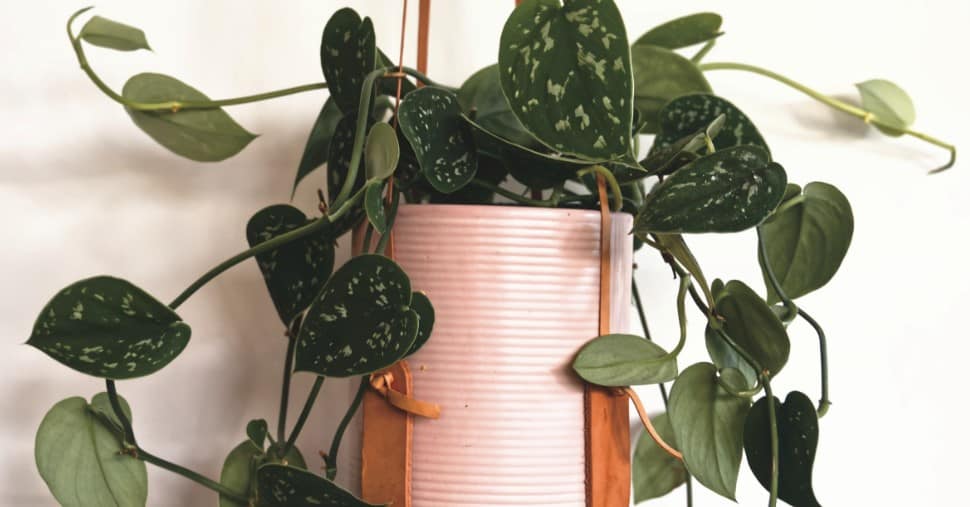
This is probably one of the most popular water houseplants. Many love it for its air purifying nature and easy maintenance requirements. The Devil’s Ivy, as it is popularly known as, is a wild plant that can easily take over an area. However, growing it in a glass bottle in your home allows for controlled growth.
Pothos is notoriously hard to kill and will stay green under the worst of conditions. This has earned it the infamous Devil’s Vine or Devil’s Ivy name
To grow it, choose a dark container that blocks out light and prevent algae growth. You will also need to throw in a bit of liquid fertilizer to boost growth regularly. To get started:
- Find a suitable container
- Get proper pathos cuttings, from a cultivator. Ask a friend who grows one to assist or but it. Make sure that you are getting stem cutting with at least three nodes on it.
- Place the cuttings in a container. Ensure the cut ends are submerged in the water.
- You will notice root forming after a few days.
- Replenish the water every week, adding liquid fertilizer to it on a monthly basis.
English Ivy (Hedera helix)
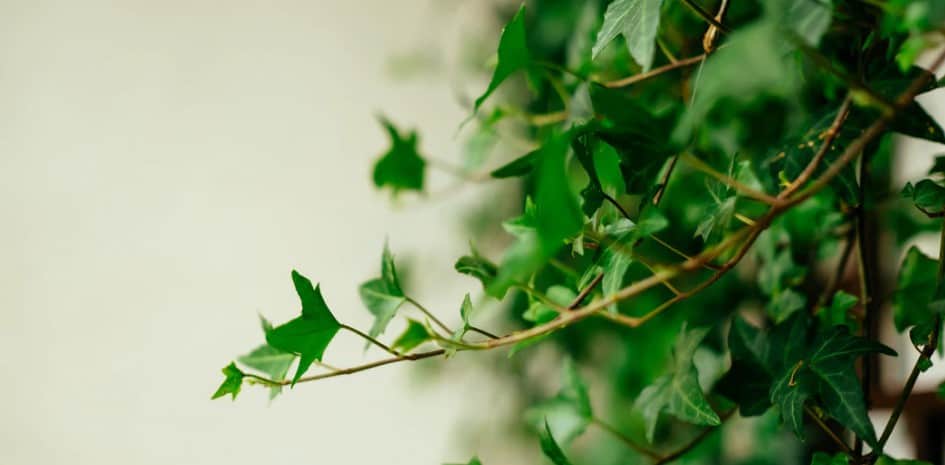
The English Ivy (common ivy) is another great water plant for your home. However, you may have to come up with hacks that help keep it great for the house. Usually, it needs to be transplanted after about 6 weeks. But this does not have to be the case. Most people growing them in water keep pruning or re-propagating to keep them indoors. To grow it perfectly, consider the following:
- Use a glass vase with tap water to grow the plant
- Cut 6 inches of the stem and leave three to four leaves that are already sprouting.
- When putting in the jar, cover the stem only and leave the leaves out.
- Change the water when necessary since it will show. The color will turn, and a foul smell may ensue.
- To avoid transplanting the Ivy, take the fully-grown ones and re-propagate as you did when starting
- Alternatively, you can keep pruning the plants to a manageable size.
- When pruning, your cuts should always be a quarter-inch above a leaf node. This will shorten the leaves but keep the root system intact.
Philodendron Plants
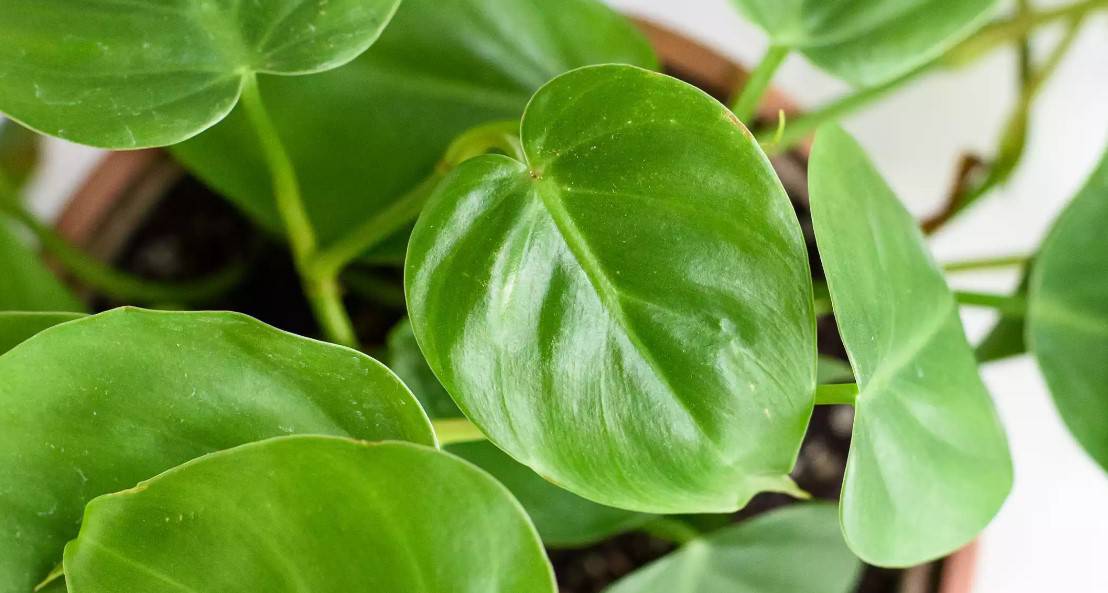
If you are interested in an evergreen, low maintenance plant, then this is it. You do not even have to change its water in over a year, and you will still get lush green leaves sprawling on the side of your vase. While this may seem easy, it all depends on whether you got a good stem cutting in the first place. To grow it:
- Get a 6-inch cutting from a parent plant
- Cut it a one quarter-inch from the leaf node
- You should get rid of all the other leaves, except for two or three of them
- Place the cut stem in a jar of water, making sure that all the nodes are immersed
The plant is a great indoor option since it thrives under room temperatures. You may also consider this easy-to-grow plant as a hardy type. All you need to do after growing it is a clip a few times to keep it well-shaped. It will be green all year round as long as it is grown in water.
Peace Lilly (Spathiphyllum)
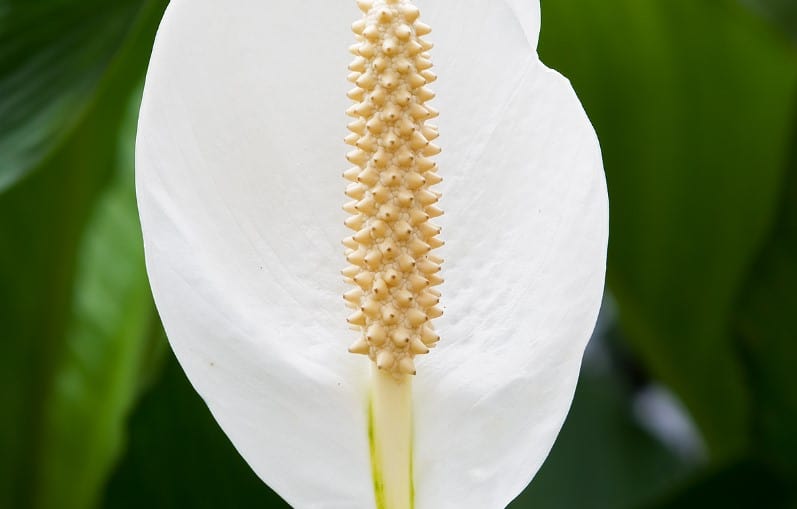
Apart from its beautiful white flower, you will also love the rooting system, especially when it is grown in a glass jar. You may also want to check the plant carefully as it will need repotting every 2 years. To grow a healthy Lily, consider the following tips:
- Choose mature lily plant and take it out of its pot
- In a basin or sink of warm water, swish the roots around to eliminate the soil completely
- Keep washing until the roots are clearly visible
- Using a knife, clear the offshoots from the crown and roots. Make sure you do not interfere with the leaves because four leaves must be left intact.
- You can then place it in a vase with water, preferably glass, if you want to see the roots.
- Change the water once a week to replenish nutrients and add some fertilizer regularly.
The Wandering Jew (Tradescantia zebrina)
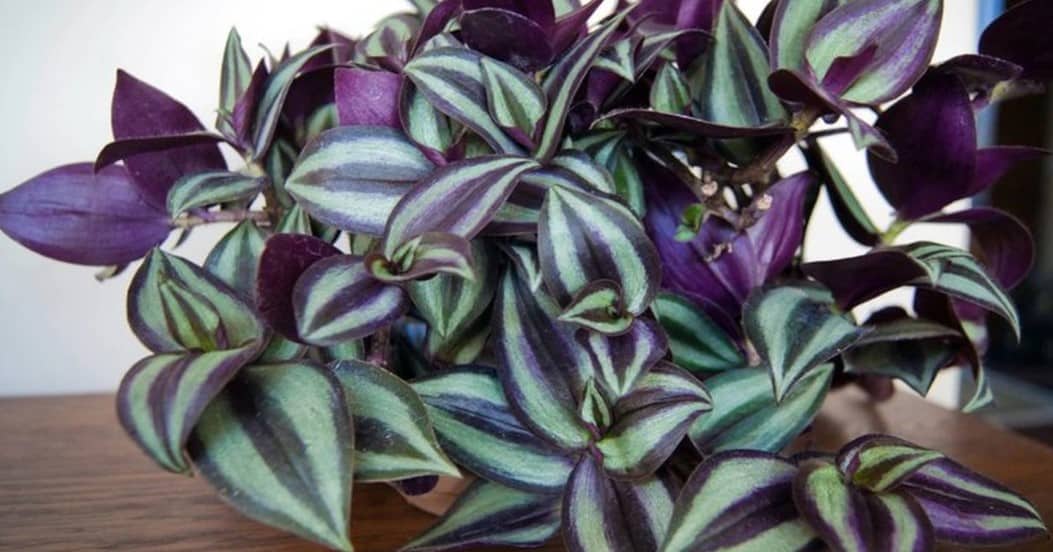
Did you know that you can choose colorful water plants for your home? Wandering Jew is an excellent example. It gives off a beautiful green, purple, and silver combination that is attractive to the eyes. It makes an excellent ornamental water plant for any home.
Check this too: 10 Beautiful Trailing Succulents for Your Hanging Baskets
What’s more, the plant is fast growing as long as you propagate it properly. To do this, follow the steps below:
- When using a narrow jar, use two or three cuttings. Larger vases can take up to 6 cuttings. However, when growing the plants, use one cup per cutting.
- To prepare the cuts, use a pair of scissors and cut above the plant’s highest leaf
- Spin-off the lowest set of leaves. You will be left with a node which when placed in water will develop new roots
- New leaves will then emerge, and branches will also form. You may, therefore, want to rethink the idea of propagating many plants in one vase.
Chinese Evergreen (Aglaonema)
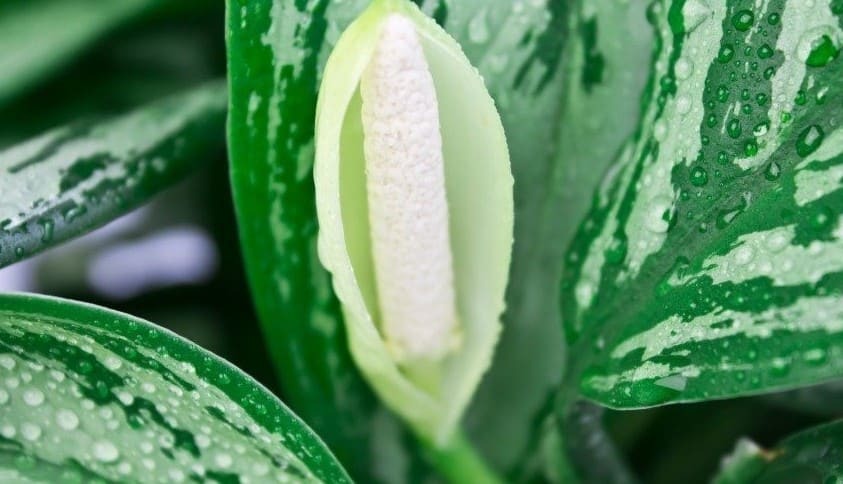
You will need a mature Chinese Evergreen plant to propagate this one. The most appropriate cutting will be about 6 inches below the leaf node. To grow this beautiful plant in water, you must follow the steps below:
- Choose several stems with not less than one already-emerging leaf
- Transfer this to a glass jar and fill it up enough for the roots to be submerged.
- Use rainwater if available. When using tap water, let it rest outside for a day to reduce the level of chlorine and other chemicals that may kill the plant.
While this is a pretty hardy plant, it may struggle to grow in water alone. When this happens, consider throwing in a few water gel beads, especially if you do not want to re-propagate it. Nonetheless, it is a perfect choice for those seeking to find plants that trail beautifully.
Coleus Plant (Plectranthus scutellarioides)
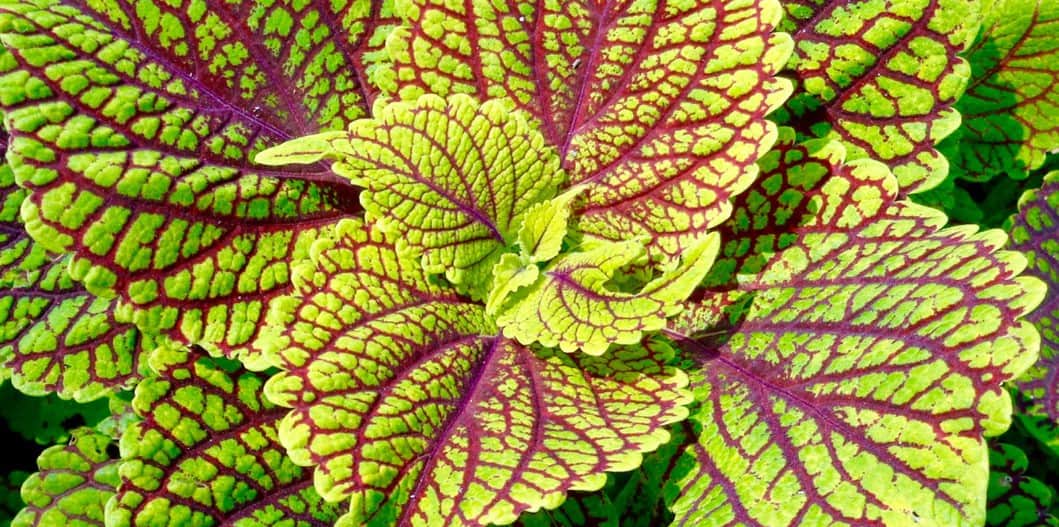
This colorful plant is always distinct, regardless of its variety. Any of its varieties will easily grow in water, as long as there is a proper application of fertilizer. They may look tough but are not truly hardy. Be careful about rooting this plant because it is different. The plant has two types of stems, the first has a node at the end, whereas the second, an apical stem comes with a bud, making it the secondary stem. Follow the steps below if you want to propagate it.
- Get a mature plant with the apical stem
- The stem should be 6 inches tall.
- Pull out leaves from the bottom part, leaving only those at the top.
- Place the stem in water, ensuring that the node is submerged, but the leaves are out.
This plant guarantees a lot of color in your home. Some people believe that it comes to some good luck. Try it to find out!
Geranium (Pelargonium)
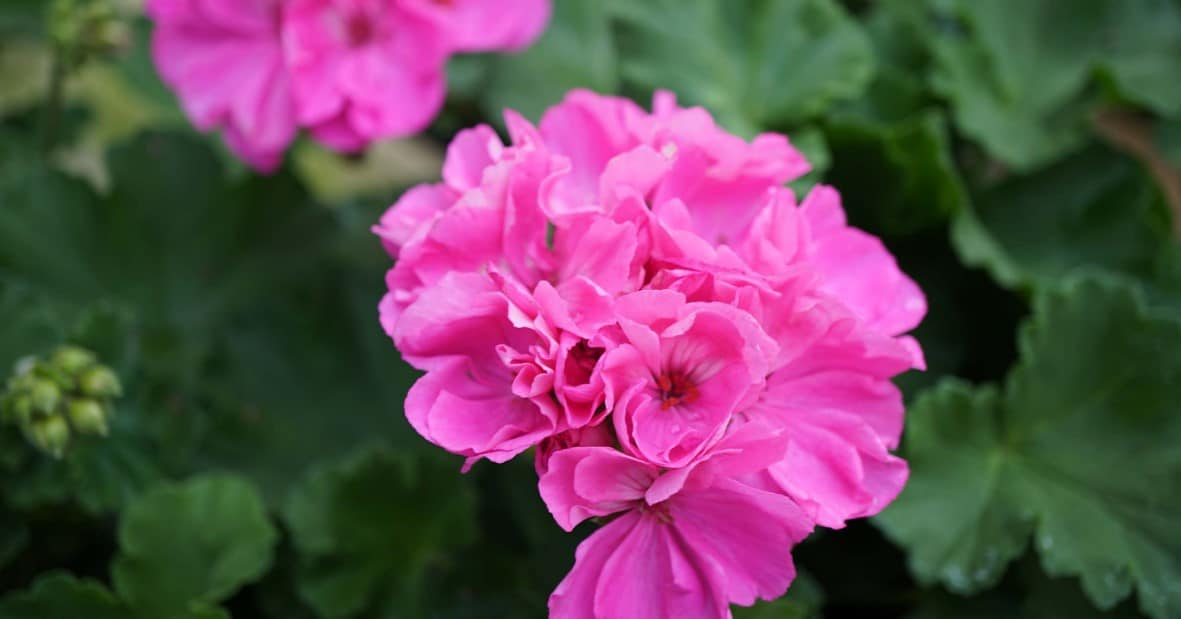
This is a perfect choice for its color, hardy nature, as well as ease of caring for it. In fact, they are among the most popular house plants for their pop color and inviting scent. What’s more, you can easily grow them as follows:
- Choose a healthy growing plant that is between 4 to 6 inches from below the leaf node
- Ensure you choose a stem from a leaf stalk and not a flowering stock
- Remove all leaves except those at the top
- Place your cutting in a vase with water, making sure that the leaves are above the water.
- Find a place with enough sunlight and pace the vase. Be careful not to expose the plant to direct sunlight.
- The roots will form after a month, but you should leave it for another two weeks before considering to transplant.
Begonia
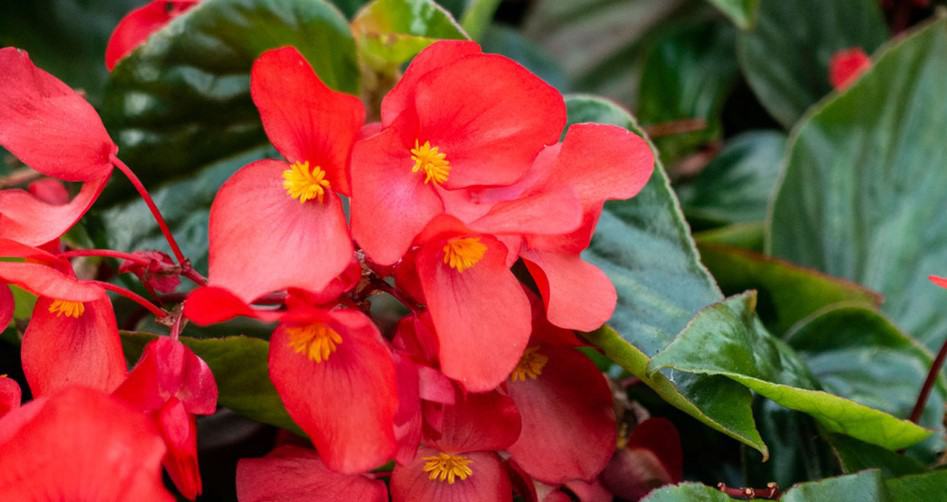
This is yet another colorful plant to grow with much ease. You can enjoy a lot of summer bloom inside your house as long as you want. They come in different varieties but are all propagated the same way as follows.
- Select a healthy begonia plant. Go for those that have become thin and long, and have a large leave expanse on stems.
- Choose a cutting that is 4 inches long and snip just below the node
- Remove all leaves, leaving only those at the top
- Place the cutting in a water container, preferably go for a small container. Choosing a small container helps concentrate the rooting hormone that the plant releases
- Ou can also choose to place more than one plant in a container.
- Roots will form in a month.
Lucky Bamboo
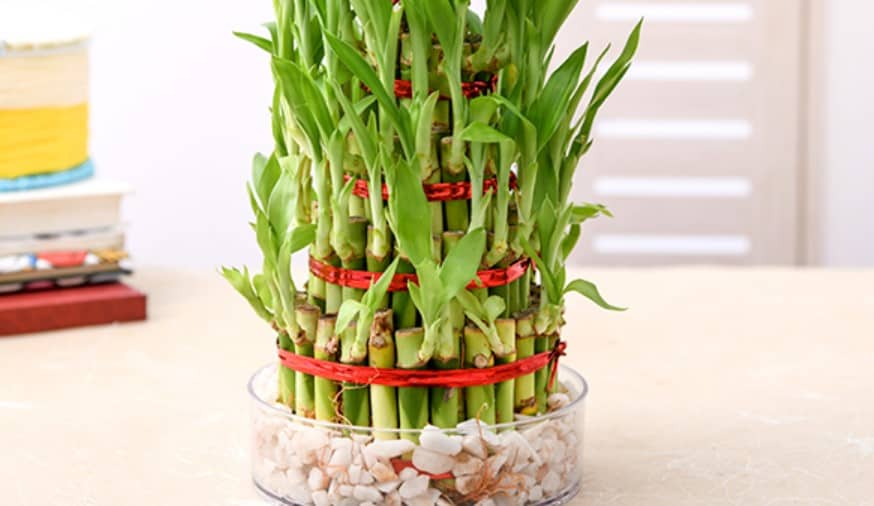
The Lucky bamboo is also a popular home plat grown in water by most people. This pant has recently grown in popularity but has always had cultural significance among the Chinese. It is believed to bring good fortune, especially when they are three. Growing and caring for it is also super easy.
- Take a water container and throw in some pebbles in a layer. This is important for offering the necessary support to the plant.
- The container should have enough water to cover the roots, at least 1 to 3 inches.
- Refresh the water every 2 to 4 weeks, making sure to clean the pebbles and container.
- You can add fertilizer every once a month, but this is not mandatory.
- Keep it warm, but away from direct sunlight.
- Be careful about using water with chlorine because the plant is highly sensitive.
You may also want to be careful with pets chewing on the leaves of the plant because they are mildly toxic.
Growing plants in water is easy. Choose any of the above plants and get started. Introduce a bit of color and freshness into your home.
